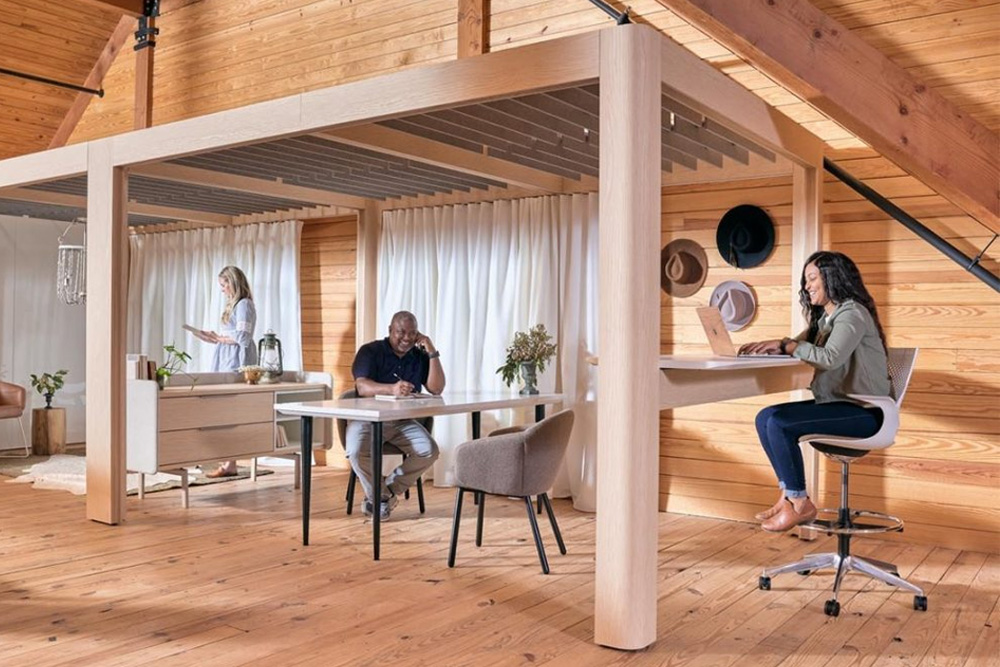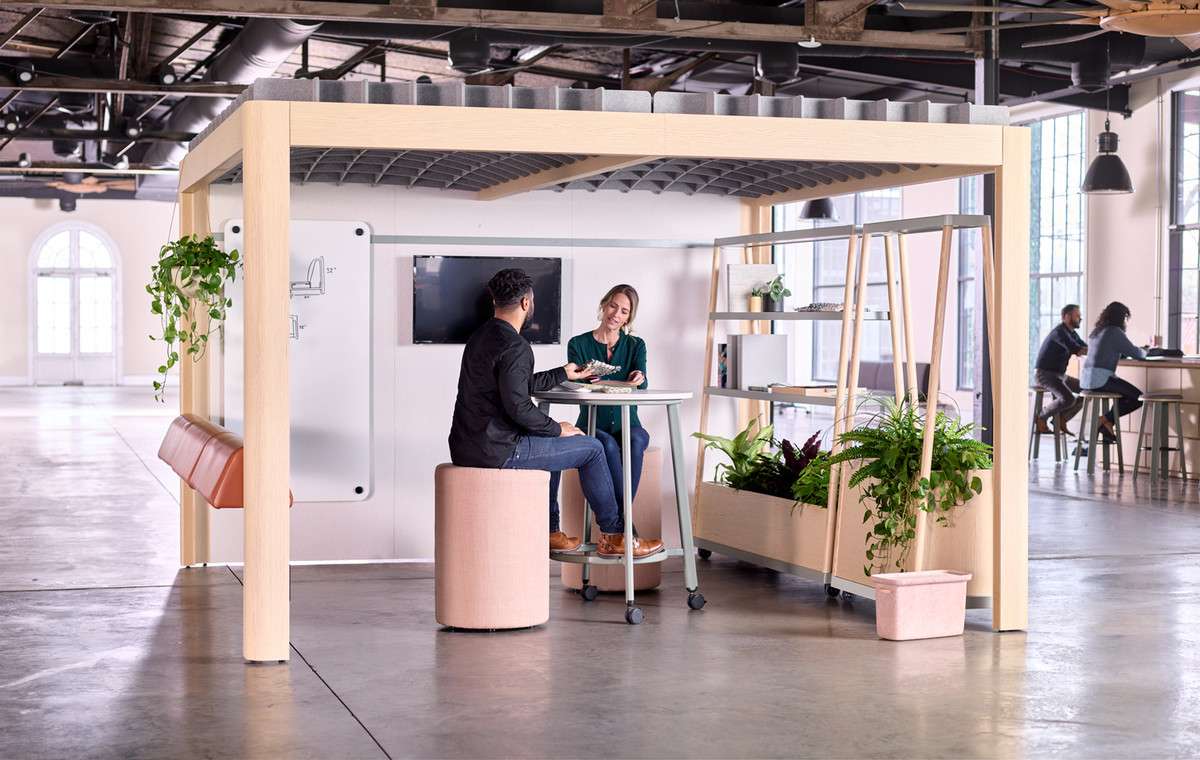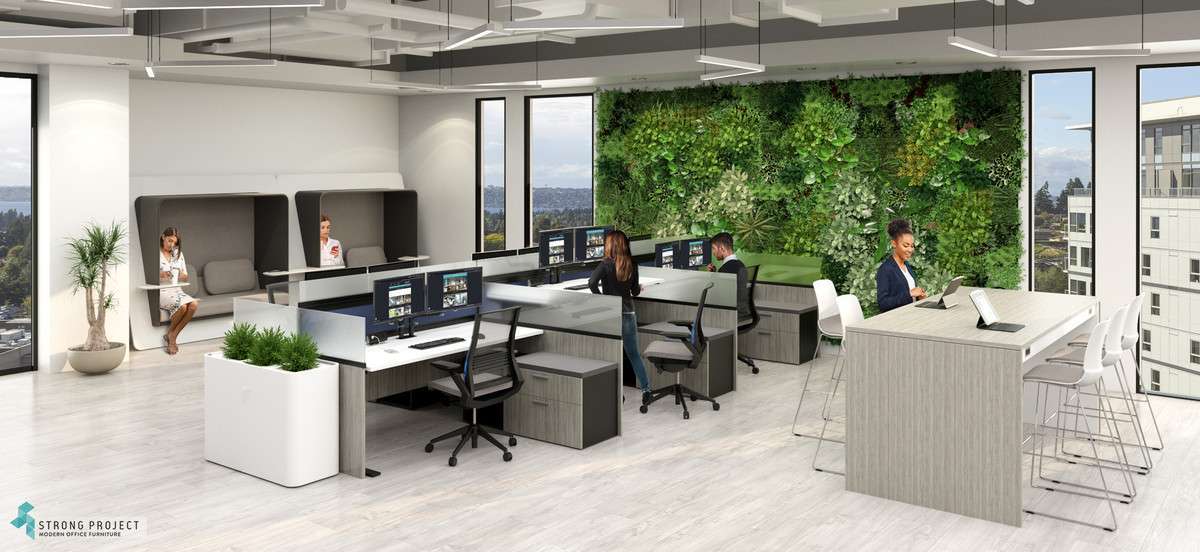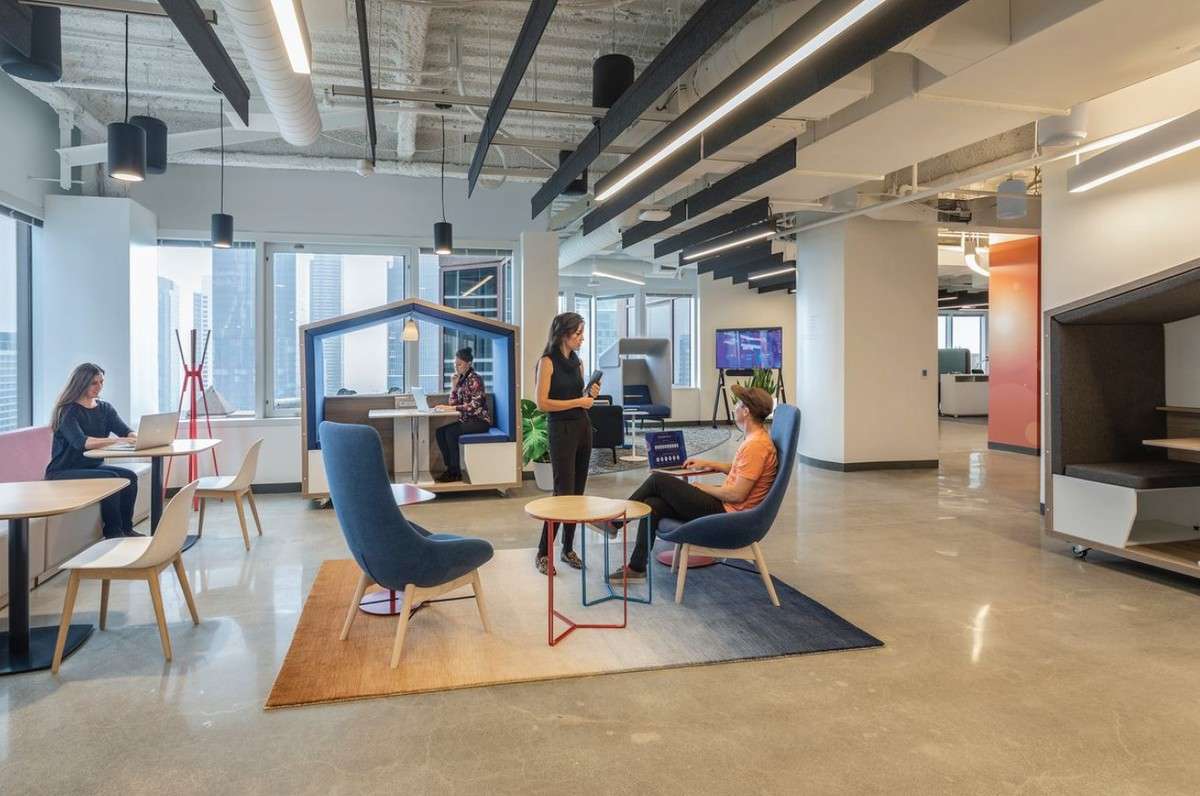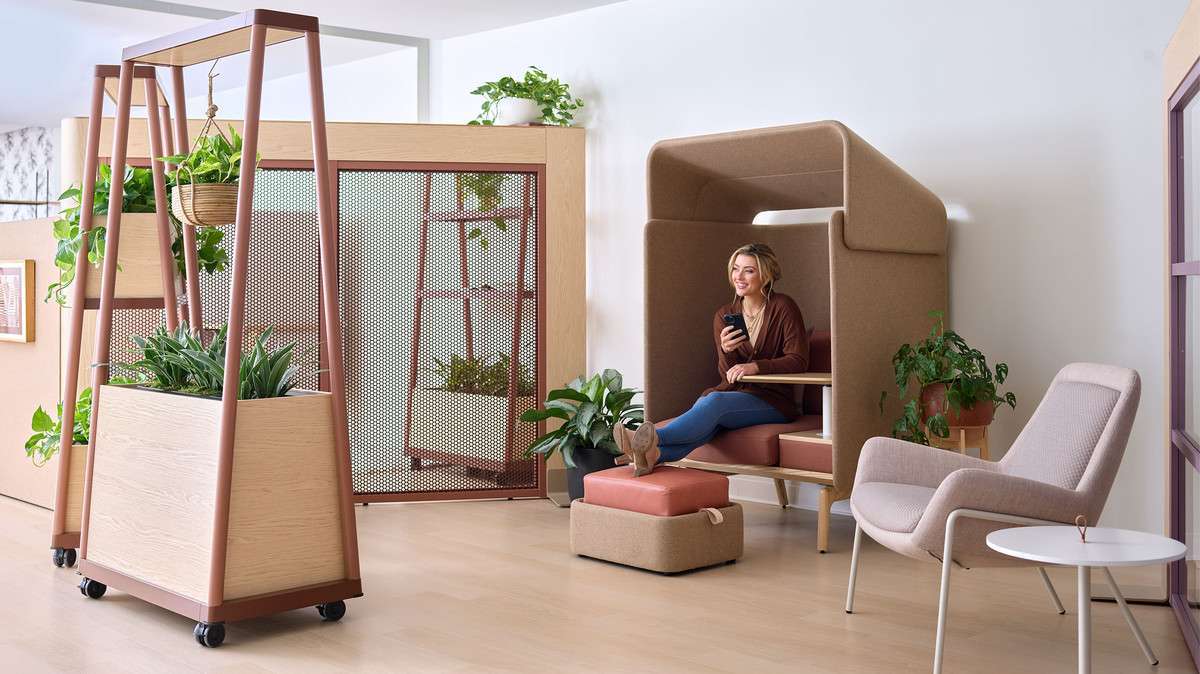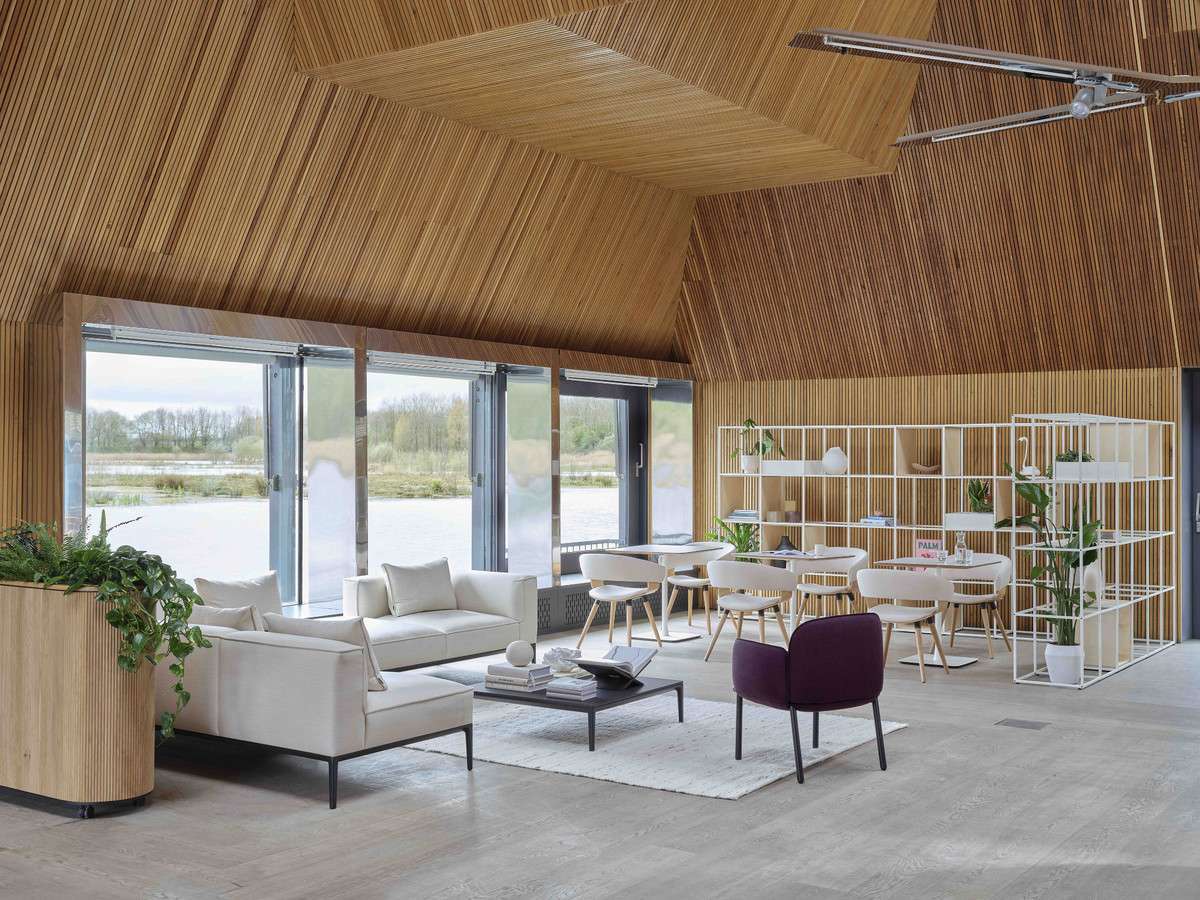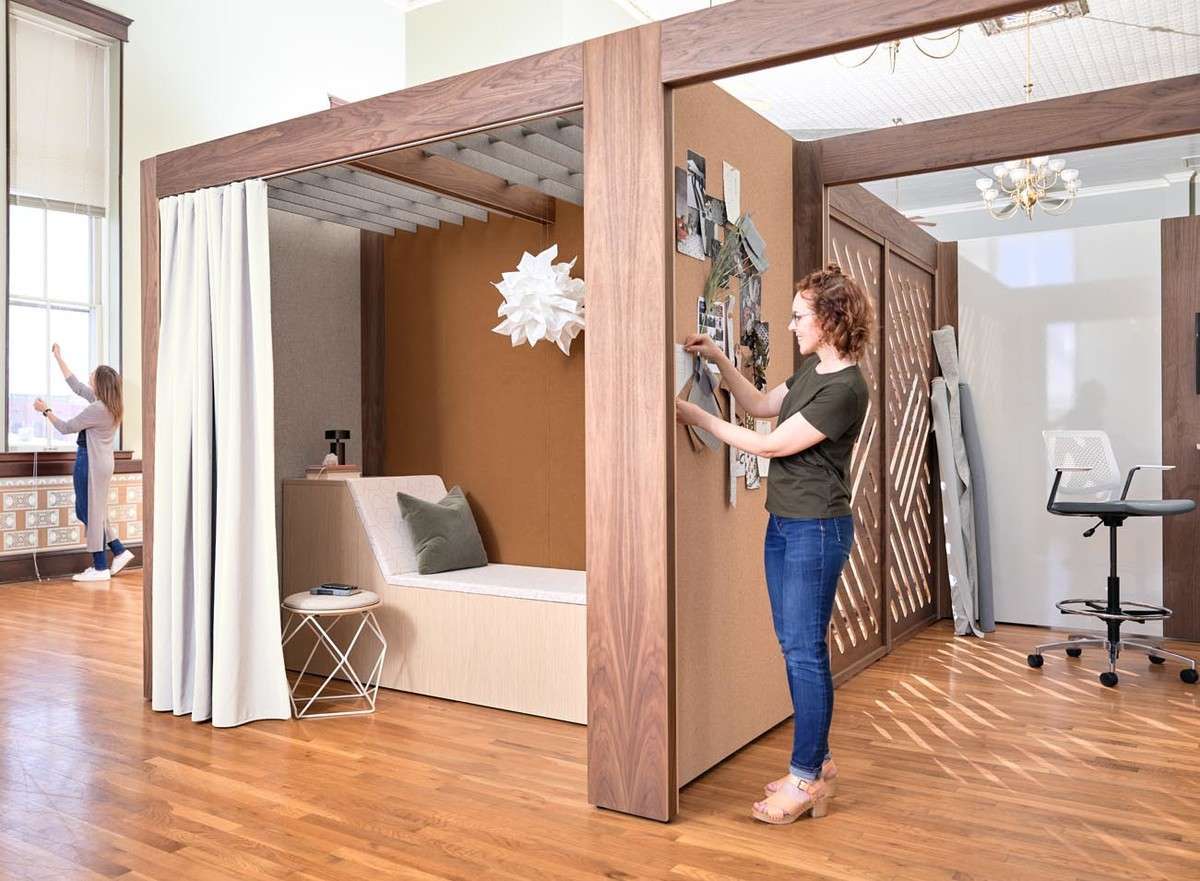The end of the year is rapidly approaching. The office has continued to change and evolve rapidly. Last year we predicted natural, sustainable and acoustic designs, an increased emphasis on comfort in the workplace, and flexible and adaptable furniture. Many of these office trends are here to stay as we continue to find out what hybrid looks like in many organizations. We are looking ahead to next year with a focus on collaboration, community, and well-being. When planning any layout changes or updates for 2023 here are the modern office design trends we think you should implement.
Modular Design
To say the office has changed over the last few years would be an understatement. Despite the growing number of employees returning to the office, a majority of companies are now operating under some sort of a hybrid schedule. This transient workforce has increased the need for flexible and easily adaptable workspaces. This is why modular designs are topping our list of modern design trends.
These product sets can be easily changed and can expand or be reduced as your workforce changes. By definition, modular means a self-contained unit or item, such as furniture, that can be combined or interchanged with others like it to create different shapes or designs. In the office, modular furniture can be interchanged and combined to create the layout desired for your team. From partitions to whiteboards, all these multifunctional pieces can be used to shape and reshape your space.
Incorporating Varied Work Zones
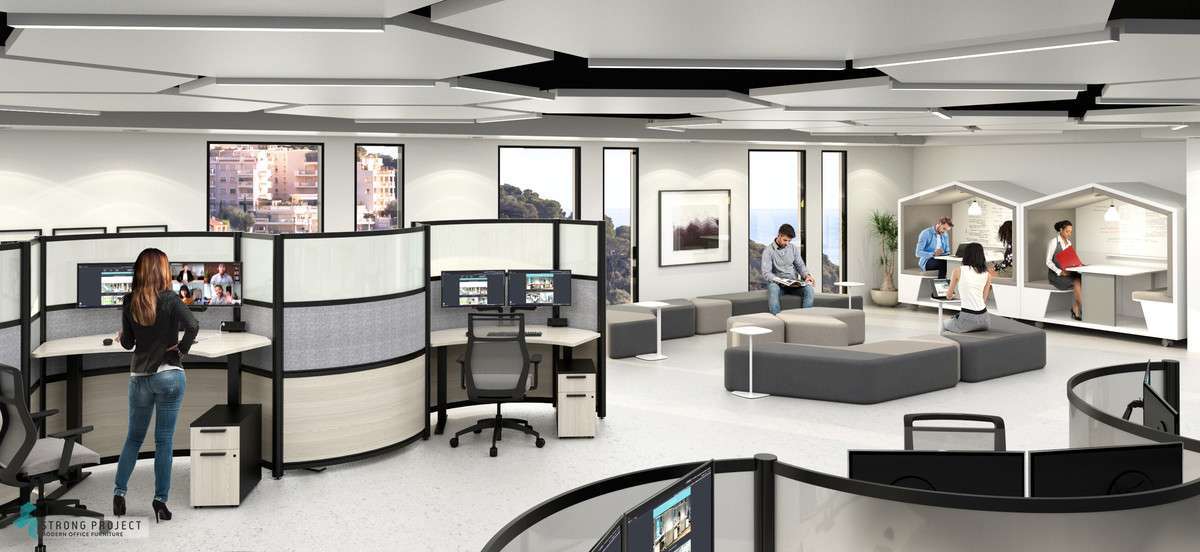
In our new hybrid reality, the purpose of the office has changed. When an employee comes into the office, they need the right environment to complete their tasks for the day. Many choose in-office days as a time of collaboration. For some this may mean large, open workspaces. For others, this might look like a one-on-one acoustic meeting pod for project alignment. Other employees come to the office to complete focused work. This may mean private cubicles where they can work undisturbed. But for most teams, all types of spaces are needed at different times.
Creating spaces throughout your office to accommodate the various needs of your team is a modern office design trend that companies should include. As we continue to navigate what the hybrid office should look like, this is one strategy that should be included.
In our new hybrid reality, the purpose of the office has changed.
In their recent redesign, LinkedIn created five different zone types. Neighborhoods are their way of approaching desk sharing, but with a little more structure. If there are twenty team members, there are twenty workspaces, all with different purposes, but none assigned. In addition to larger collaboration spaces, smaller meeting spaces, and focus zones, they encourage cafes to increase a sense of community in your team.
Visually Appealing Spaces
Last year we predicted the rise of biophilia in office design, and this is on our list again for 2023. Employees want a workplace that is designed well. Not only for function but also to be aesthetically pleasing. Grey non-descript cubicles are out and bright, fresh and visually appealing features are in.
This isn’t limited to adding plants to the office, although we think this is definitely a modern design trend of note. Additionally, a growing trend in many offices is adding artwork. A new research study by Perspectus Global reports that 69% of those surveyed, felt having “interesting and visually striking art” at the workplace improves their well-being. And employee well-being is definitely an issue companies who care about recruitment and retention should be aware of.
Collaboration Spaces
Despite the need for multiple zones in the workplace, collaboration is the number one reason hybrid employees with scheduling autonomy come to the office. According to Gartner,
“Hybrid work environments provide new ways for employees to collaborate productively, but leaders must intentionally create those opportunities.”
Offices can be designed to encourage collaboration. And the easiest way to do that is to include multiple collaboration areas throughout your office. These spaces should either be flexible, to accommodate groups of changing sizes, or each space should be designed with a different-sized group in mind.
In planning your collaboration spaces, consider the typical groups that gather. If your teams usually break off into pairs to troubleshoot tough problems, include multiple options for these meetings. If your group loves large creative brainstorming sessions, create spaces with the tools and space to meet their needs.
Well-Being in the Workplace
It has been a tough few years. From employees to managers, we all hoped that we would settle into a ‘post-COVID’ normal. But life in many industries has been anything but. Businesses continue to struggle. Inflation and supply chain issues are still on the rise. Customer expectations are higher than ever—and their tolerance and patience are lower than ever. Employees are burnout, stressed out, and overwhelmed.
That’s why employee well-being should be a top design initiative for any industry. But how do you design for employee well-being? These themes were present on the agenda at this year’s Orgatec event. Some designs suggested include acoustic pods to block out background noise and improve focus. Including more comfortable seating. Adding partitions to create more close-knit working groups. And ensuring adequate technology ports and screens to ensure that remote and in-person employees can easily maintain connections.
Creating Community
Creating a community might seem more like a grand idea than a design trend, but a well-designed office can create a sense of community. Much like the neighborhood concept we mentioned above, connection can be designed. From creating modular layouts within your office for groups to work and collaborate. To including cafes or coffee bars in breakrooms. Small design changes can have a big impact on how your employees interact each day.
Small design changes can have a big impact on how your employees interact each day.
Creating a workplace community means uniting your team around a shared purpose. This adds meaning to the work being done and creates a sense of trust. A positive work environment improves morale, and this in turn affects retention and recruitment. Strong communities leave teams feeling valued and appreciated.
If your looking for an easy place to start, consider centralizing break and collaboration areas. This shift encourages people from throughout the office to interact more regularly. A key to happier employees is strong interpersonal relationships, and encouraging interaction and connection in your design can help build stronger communities.
Better Than Home
There has been a movement in many organizations to make the office more like home. To encourage workers to come back to the office, creating a more comfortable atmosphere has been a goal. However, we think employees aren’t looking for just like home. They want something better. Our last office design trend is including hotel-like amenities in your office.
If employers want to have their teams feel excited about coming to the office, they have to offer something beyond the comfort and convenience they already have at home. In a recent Forbes article, Vanessa Sturgeon writes,
“The only thing better than coming home is staying in a “home away from home.” For many, hotels represent and provide a cozy, curated and delightful experience for guests. Think back to the quarantine days when a “staycation” at a local hotel provided the diversity of environment that we all needed. Instead of leaving home for an office that feels like home—as was the previous trend with apartment-inspired amenities—why not offer something even better?”
Many employees have become accustomed to and prefer working from home. Making the office more like a fine hotel, is an investment in not only employee well-being, but as a means to encourage employees to return to work.
With the changing workplace dynamics, many offices are considering redesigns in 2023. If your organization is one of them, consider these modern office design trends.

